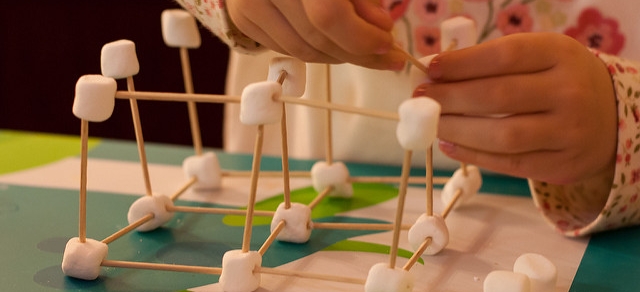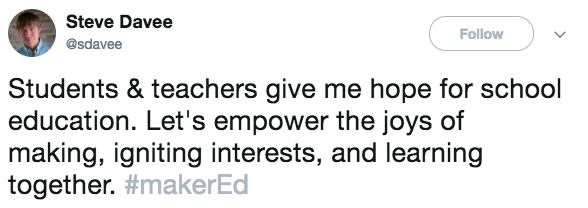Quick Tip Wednesday: How to Set Up a Gratitude Month
Welcome back to Quick Tip Wednesday!

This week's Watch It, Read It, Share It is all about the maker education movement. Maker education revolves around hands-on experiences, project-based problem-solving, and learning through making. There is no one-size-fits-all curriculum for maker education--it can be applied to any subject area, although it's often associated with STEM fields due to it's emphasis on experimentation and engineering. It embraces collaboration and cross-pollination across academic fields: it's the ultimate experiment in interdisciplinary learning. Check out some of the resources below to learn more, and see how you can incorporate maker principles in your classroom and beyond!
Check out this short introductory film from MakerEd.org, "a national non-profit organization that provides educators and institutions with the training, resources, and community of support they need to create engaging, inclusive, and motivating learning experiences through maker education." Maker Ed is a prevalent voice in the national conversation around maker education; they host teacher workshops, support after-school organizations, provide resources and document the movement. If you want to hear more about how K-12 schools have been embracing the maker movement, check out this webinar.
Invent to Learn, by Sylvia Libow Martinez and Gary S. Stager provides a history, overview, and beginner's guide to making and establishing a makerspace at your school. Check out part of the book's description:
"The maker movement not only blurs the artificial boundaries between subject areas, it erases distinctions between art and science while most importantly obliterating the crippling practice of tracking students in academic pursuits or vocational training. There are now multiple pathways to learning what we have always taught and things to do that were unimaginable just a few years ago.
Making for every classroom budget Even if you don’t have access to expensive (but increasingly affordable) hardware, every classroom can become a makerspace where kids and teachers learn together through direct experience with an assortment of high and low-tech materials. The potential range, breadth, power, complexity and beauty of projects has never been greater thanks to the amazing new tools, materials, ingenuity and playfulness you will encounter in this book.
In this practical guide, Sylvia Martinez and Gary Stager provide K-12 educators with the how, why, and cool stuff that supports classroom making."
A quick Twitter search for #makered reveals how broad maker projects truly are--from incorporating advanced robotics equipment to experiments using simple materials, the possibilities with maker education are endless.
Want to see what makers around the country are doing and join in the conversation? Check out #makerED chat on Tuesday evenings, at 6:00PM EST.

Image attribution
Site: flickr.com [Image 1]
.png)
Welcome back to Quick Tip Wednesday!

Mid-Year Reflection: Your Secret to a Stronger Second Semester
A great way to get your learners engaged in your Alludo program is by keeping the content in your program up-to-date and relevant. Rebecca has...